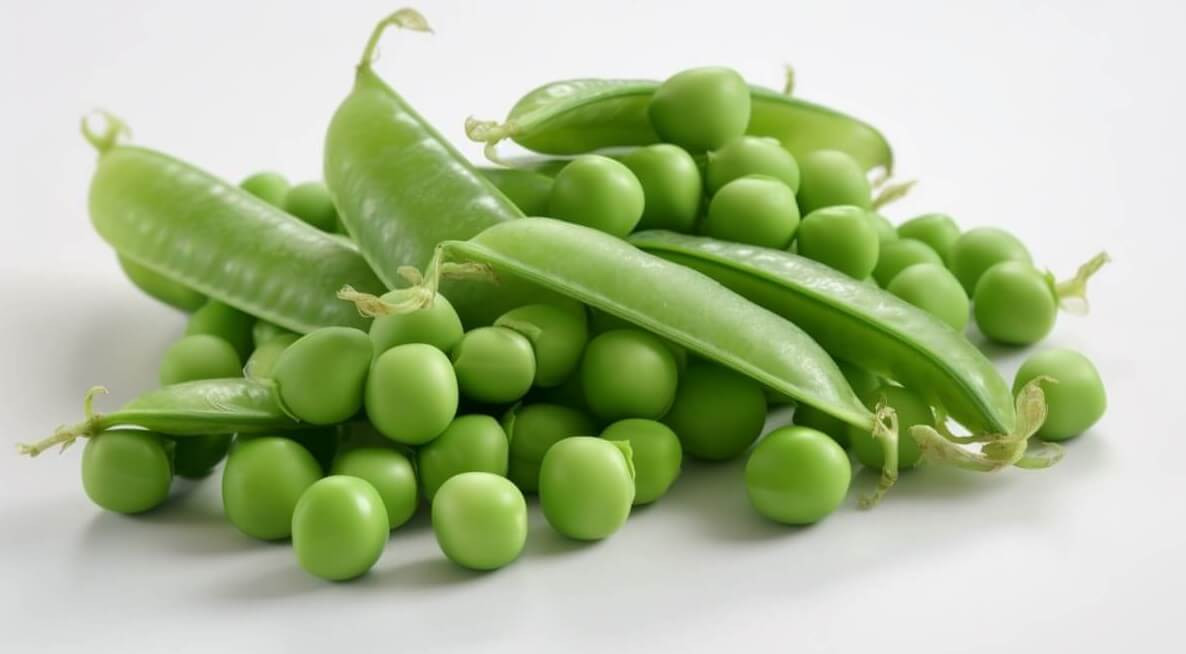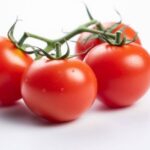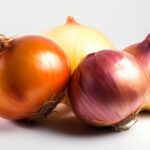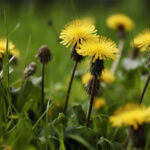Would you prefer to listen to a short podcast discussion about this article? Click on the audio below.
Are you interested in growing your own peas but don’t know where to start? Look no further! With a little bit of patience and care, you can enjoy fresh, delicious peas straight from your garden. In this article, we’ll cover everything you need to know about growing peas, from choosing the right variety to harvesting and preserving your crop. Let’s get started!
Table of Contents
Getting Started with Growing Peas
Before you begin planting, it’s important to prepare your garden bed. Choose an area with well-draining soil and plenty of sunlight. Peas prefer cool weather, so plan to plant them as early in the growing season as possible. You can also plant a second crop in late summer for a fall harvest.
Choosing the Right Variety of Pea
Peas are a delicious and nutritious addition to any garden. Not only are they easy to grow, but they are also versatile in the kitchen. Whether you are looking for a quick snack or a tasty addition to your favourite recipe, there is a pea variety that will meet your needs.
When choosing the right variety of pea, there are several factors to consider. One of the most important is your climate. Some pea varieties are better suited for cooler temperatures, while others can thrive in warmer climates. If you live in a region with hot summers, you may want to consider planting a heat-resistant variety like Wando or Green Arrow.
The amount of space you have is another important consideration. If you have a small garden or limited space, you may want to choose a more compact variety, such as Sugar Snap or Oregon Sugar Pod. These varieties are known for their dwarf growth habit and can be grown in containers or small raised beds.
If you are looking for a pea variety that can be eaten raw, sugar snap and snow peas are excellent choices. These varieties have edible pods and are perfect for snacking or adding to salads. They are also easy to grow and can be harvested in as little as 60 days.
For those who prefer shelling the pods, there are many delicious varieties to choose from. Little Marvel is a popular choice for its sweet flavour and tender texture. Other shelling pea varieties include Green Arrow, Lincoln, and Wando.
No matter which variety you choose, be sure to plant in well-draining soil and provide them with plenty of water and sunlight. With a little care and attention, you can enjoy a bountiful harvest of fresh, delicious peas all season long.

Preparing the Soil for Planting Peas
The pea is a cool-season crop that can be planted in early spring or fall. Before planting, it’s important to prepare the soil properly to ensure your peas have the best chance of thriving. In this section, we’ll discuss some tips for preparing your soil for planting your crop.
Step 1: Test Your Soil
The first step in preparing your soil is to test it for pH and nutrient levels. You can purchase a soil testing kit online or at your local garden centre. The ideal pH range for peas is between 6.0 and 7.5. If your soil is too acidic, you can add lime to raise the pH level. If it’s too alkaline, you can add sulfur to lower the pH level. Testing your soil will also give you an idea of what nutrients your soil is lacking, so you can add the appropriate amendments.
Step 2: Clear the Area
Before you start preparing the soil, clear the area of any weeds, rocks, or debris. These plants have shallow roots, so they won’t compete well with other plants or weeds for nutrients and water. Make sure the area is free of any obstacles that could hinder the growth of your plants.
Step 3: Add Organic Matter
Peas prefer well-draining soil that’s rich in organic matter. Adding compost or well-rotted manure to your soil will help improve drainage and fertility. Spread a layer of organic matter over the soil and work it into the top 6-8 inches of soil. This will help loosen the soil and create a crumbly texture that’s ideal for pea roots.
Step 4: Fertilize
Peas are nitrogen-fixing plants, which means they can take nitrogen from the air and convert it into a form that’s usable by plants. However, they still need other nutrients to grow and produce healthy pods. Before planting, you can add a balanced fertilizer to your soil to give your peas a nutrient boost. Look for a fertilizer with equal amounts of nitrogen, phosphorus, and potassium.
Step 5: Mulch
After planting, you can add a layer of mulch to help retain moisture and suppress weeds. Pea plants are susceptible to drying out if the soil becomes too dry. Mulching will help keep the soil moist and cool, which is ideal for pea growth.
By following these steps, you can prepare your soil for planting, and set them up for success. With proper soil preparation, your peas will grow strong and healthy, producing delicious pods for you to enjoy.

Planting and Caring for Your Plants
Peas are a delicious and nutritious addition to any garden. They are easy to grow and require minimal care. Here are some tips to help you plant and care for your peas:
Choosing the Right Location
These plants prefer cool temperatures and thrive in well-drained soil. Choose a location in your garden that receives at least 6 hours of sunlight per day. If you live in a hot climate, consider planting your peas in a spot that gets afternoon shade to protect them from the intense heat.
Preparing the Soil
Before you plant your pants, prepare the soil by removing any weeds or debris. Peas prefer soil that is slightly acidic, with a pH between 6.0 and 7.5. You can amend your soil with compost or well-rotted manure to improve its texture and fertility.
Planting Your Peas
Plant your peas in early spring, as soon as the soil can be worked. Make a trench that is 1-2 inches deep and 2-3 inches wide. Space your seeds 2-3 inches apart in the trench, and cover them with soil. Water the seeds thoroughly.
Providing Support
Peas are climbers, so it’s important to provide support for them to grow on. You can use trellises, stakes, or even a fence for support. Train the vines to climb the support as they grow.
Watering Your Peas
The plants require regular watering, especially during dry spells. Water deeply once a week, or more often if the weather is hot and dry. Be careful not to overwater, as peas are shallow-rooted and can easily become waterlogged.
Fertilizing Your Plants
Peas do not require a lot of fertilizer, but you can give them a boost by applying a balanced fertilizer when they start to flower. Be sure to follow the instructions on the fertilizer package carefully.
By following these simple tips, you can enjoy a bountiful harvest of delicious, fresh peas all season long!
Watering and Fertilizing Your Crop
Pea plants are a great addition to any garden. Not only are they delicious, but they are also relatively easy to grow. However, to ensure that your pea plants grow strong and healthy, it’s important to take care of their watering and fertilization needs.
When it comes to fertilizing your pea plants, there are a few things to keep in mind. First, it’s important to use a balanced fertilizer or organic compost. This will provide your plants with the necessary nutrients, such as nitrogen, phosphorus, and potassium. Second, be careful not to over-fertilize. While it may be tempting to give your plants more nutrients in the hopes of getting bigger yields, over-fertilization can actually lead to faster growth but smaller yields. So, be sure to follow the instructions on your fertilizer or compost carefully.
In addition to fertilization, watering is also an important aspect of pea plant care. Pea plants need about 1 inch of water per week, but this can vary depending on the weather conditions in your area. If it’s particularly hot or dry, you may need to water your plants more frequently. On the other hand, if it’s been raining a lot, you may not need to water your plants as much. It’s important to strike a balance and not water your plants too much or too little.
When watering your pea plants, it’s best to water at the base of the plant, rather than from above. This will help prevent the leaves from getting wet, which can lead to disease. You can also mulch around the base of your plants to help retain moisture in the soil.
Overall, taking care of your pea plants’ watering and fertilization needs is key to ensuring a healthy and productive harvest. With a little bit of attention and care, you’ll be enjoying delicious, fresh peas in no time!
Controlling Pests and Diseases
Unfortunately, peas are susceptible to a number of pests and diseases, such as aphids, powdery mildew, and pea weevils. To prevent these problems, make sure to keep your garden clean and well-maintained, and remove any infected plants immediately. You can also use organic pest control methods, such as neem oil or diatomaceous earth, to keep pests at bay.
Harvesting Peas at the Right Time
When it comes to harvesting your peas, it’s important to wait until the pods are fully formed but not yet mature. This will ensure that you get the sweetest and most flavorful peas possible. Depending on the variety you chose, you should be able to harvest your peas in about 60-90 days. Simply snap off the pods at the base of the stem and enjoy!
Dealing with Unfavorable Weather Conditions
If you’re dealing with unfavourable weather conditions, such as extreme heat or cold, you may need to take extra precautions to protect your peas. Consider providing shade for your plants during heat waves, or covering them with a frost cloth during cold snaps. You can also water your plants more frequently to help them cope with extreme temperatures.
Cooking and Preserving Peas
Once you’ve harvested your peas, there are many delicious ways to enjoy them. Fresh peas can be eaten raw or cooked, and are delicious in salads, soups, and stir-fries. You can also freeze or can your peas to enjoy them throughout the year. To freeze peas, simply blanch them in boiling water for a few minutes, then shock them in ice water before freezing them in airtight containers.
Common Problems and Solutions for Growing Peas
Some common problems you may encounter when growing peas include yellowing leaves, stunted growth, and poor yields. These problems can be caused by a variety of factors, such as poor soil quality, pests, or disease. To address these issues, make sure to maintain proper soil moisture, keep your garden clean and well-maintained, and use organic pest control methods as needed.
Growing your own peas can be a rewarding and enjoyable experience, and with a little bit of care and attention, you can enjoy fresh, delicious peas straight from your garden. Use these tips to help ensure a successful pea harvest, and enjoy the fruits of your labour!
If you are keen on organic gardening, check out The Soil Association website
If you need any further information or assistance with this article, don’t hesitate to Contact Us




















